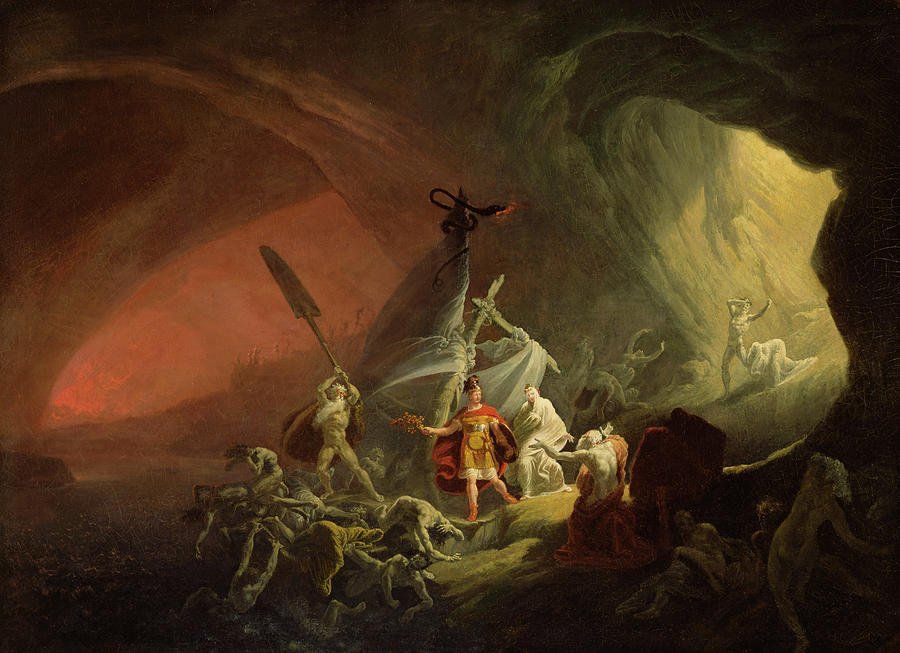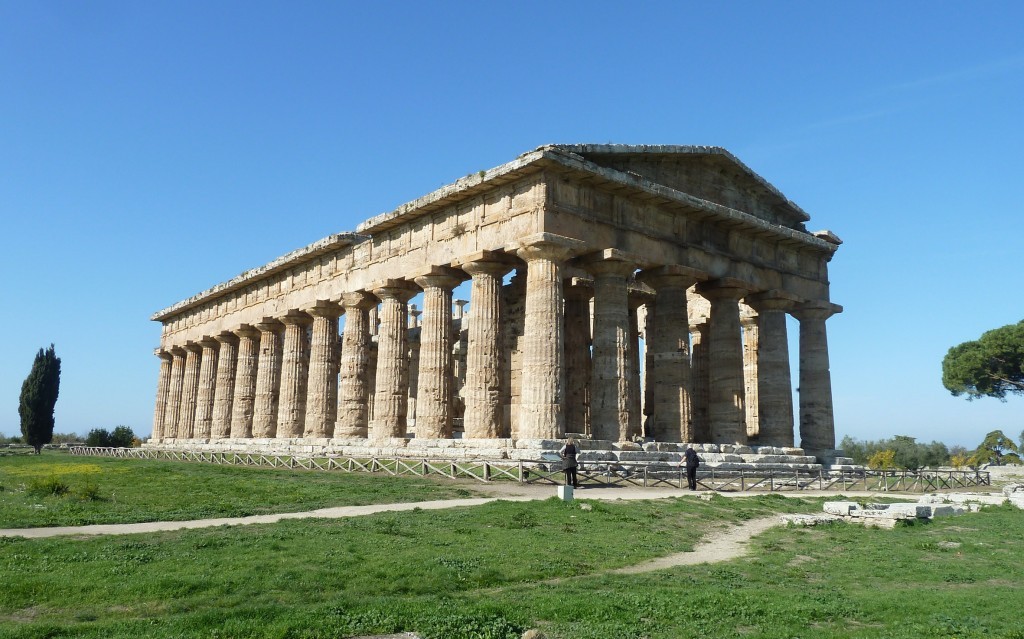by Kevin Blood
The worlds of ancient Greece and Rome were, of course, deeply intertwined over the centuries. This history stretches back further than some may realise, though, to a series of city states in the south of Italy.
From the 8th century BCE, the Greeks established colonies along the coasts of Sicily and southern Italy (with the exception of the west of Sicily), from the Bay of Naples to the Bay of Tarentum, stretching to the southern coasts of Gaul. Further Greek expansion to the west and north was inhibited by the Etruscans and the Carthaginians. The 6th and 5th centuries were the summit of flourishing for these Greek colonies. It was through their influence on the Etruscans, with whom they had extensive trade relationships, that these Greek colonies came to indirectly influence Roman culture. This is evidenced by the amount of Greek pottery in Etruscan tombs and the presence of Greek mythic and legendary themes found on Roman and Etruscan art works. Through the Etruscans the Romans received Greek architecture, social practices, religious cults and the art of writing.
The influence of Greek culture on the Romans strengthened with the Roman conquest of Magna Graeca in the third century. This is apparent in areas of science, philosophy, literature, education and legal and political institutions. Magna Graeca encompassed, amongst others, the city-states of Cyme (Cumae) and Posidonia. These were two centers of Greek culture that had a significant and enduring impact on Rome in the regal period as well as the early and middle republic.
The Sibyl and Cumae
Founded by Greeks from Chalcis before 750 on the northern Campanian plain, Cumae was a colony responsible for spreading Greek culture through the foundation of other settlements, such as Neapolis (Naples). In control of a significant portion of the Campanian coastline during the seventh and sixth centuries, the Greeks counted the settlements of Baiae and the port city if Puteoli among their possessions.
It was in the early religion of the Romans that Cumae would play an important role. In the late fifth century it was home to the Cumaean Sibyl. At this time the Romans placed great stock in the oracular powers of the sibyl and she was regularly consulted on important matters of state.
In Book VI of The Aeneid by the Roman poet Virgil, the Trojan hero Aeneas visits the sybil. It must have been a daunting experience to travel through the 137 metres long, 5 metres high stone tunnels, hewn out of the living rock, to seek and audience with the priestess. Virgil sets the scene:
‘This rocky citadel had been colonized by Chalcidians from Euboea, and one side of it had been hollowed out to form a vast cavern into which led a hundred broad shafts, a hundred mouths, from which streamed as many voices giving responses to the Sibyl.’
Some scholars believe the priestess was under the influence of powerful intoxicants, perhaps coming from the thermal vents over which she sat. Her prophecies, written in Greek, were gathered by the Romans and compiled in the form of the Sibylline Books, or Books of Fate. These books were given into the safekeeping of one of the colleges of Roman priests (a collection of ten men whose duty to was to carry out the sacred rights). In times of crisis it was they who would consult these scared tomes. Quite often when the books were consulted and interpreted by the priests, they suggested that some new Greek god or Greek ritual be brought in to the traditional framework of the Roman religion. Through this practice the Roman religion was changed over the centuries; this predisposed the religion to greater receptivity to the cults of the east.
Posidonia/Paestum
Posidonia was another Greek cultural and commercial center in southern Italy that had a deep cultural impact on the early Romans. It was also friendly to the Romans: its residents were willing to contribute to Rome’s protection in the form of a naval alliance.
It was the Greek city of Sybaris on the eastern coast of the toe of Italy that set out to establish a trading settlement on the western side of the peninsula, in about the middle of the 7th century. The Sybarian’s founded the settlement so as to benefit from the cross-country trade from the Ionian to the Tyrrhenian Sea, while at the same time partaking in a rich trade with Latium and Etruria further north. They named the settlement Posidonia. Archaeologists have dated its foundation from a wholly Greek necropolis found there.
The fertile soil, the secure anchorage in the river Sele and its ideal geographical location, as well as the decline of Etruscan power in the 6th century, and the destruction of Sybaris in 510, saw Posidonia becoming the major centre for commerce in the area. Its prestige and wealth were boosted by the influx of refugees arriving from Sybaris, who brought with them a spirit of entrepreneurship and initiative. Scholars believe that this influx of Sybarian refugees were responsible for the dedication of the underground sanctuary at Posidonia to Is, the mythical founder of Sybaris.
Between 560 and 440 Posidionia was at its zenith, its power and prestige embodied in the building of three great temples: 550 the Temple of Ceres, the so-called Basilica in 500, and the temple of Poseidon or Neptune in 450. At its most powerful it is believed Posidionia had near 20,000 inhabitants. The material remains, beautifully preserved, of the Temple of Neptune, and the tomb frescoes and terracotta statues provide evidence for the richness and magnificence of the city.
The Lucanians (from the southwest of Italy), around 410, took control of Posidonia, renaming it Paistom. Despite remaining under Lucanian control until 273, the city held on to its Greek culture and appearance – Greek potters and artists were dominant there, and the coinage remained Greek. The richness of tomb evidence from this period suggests that Paistom did not suffer a decline under the Lacanians. It seems the Italic Lacanians adopted and imitated, as the Etruscans and Romans before them did, the Greek style of vases in both shape and decoration.
The name of the city was changed, it became the city of Paestum, after the Romans established a colony at Posidonia in 273, it remains Paestum to the present day. Rome and Paestum kept close ties. The residents of the city became naval allies of Rome (socii navales). They showed great loyalty to Rome and never failed to support the Romans in times of conflict, supplying the Romans with ships and sailors. Rome was able to defeat the Carthaginians during the Hannibalic War in the third century due to the loyalty and service of cities like Paestum.
The Romans improved the amenities of the city, adding a forum, amphitheatre and gymnasium. The Romans, however, contributed to the eventual decline of the city when they built the Via Appia, a road that linked Rome with the Adriatic; Paestum was bypassed and cut off from the valuable trade from the east.
Although the Romans would eventually conquer the Greek city-states and subjugate them under Roman rule, Greek culture played an integral part in the culture, art, religion and politics of the Roman state; Greek influence was responsible for much of the later sophistication of Roman culture. Greek influences may have dismayed some advocates of traditional Roman values, but for many, if not more, they were a well-spring of valuable ideas to be tapped for the betterment of Rome.
Sources
Bradley, P. (2003) Ancient Rome; Using Evidence, Cambridge, Cambridge University Press, pp.29-34.
Connolly, P. (1981 2006) Greece and Rome at War, New Edition, London, Green Hill Books, pp. 87-130.












No comments
Trackbacks
Our apologies, you must be logged in to post a comment.